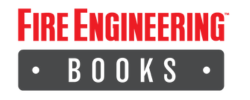From The Fire Scene by John Salka
What Have You Saved? Calculating the Fire Department’s Economic Benefits to the Community
These are difficult times for the fire service. Every government is looking hard at how their money is spent and what they are receiving in return. Firefighters are not alone in this situation. School districts, police departments, and many other public service organizations are under the spotlight now to do more with less. But the fire service is different. I have heard many firefighters say that the fire service is an expense that does not produce a tangible product, but rather we are more like an insurance policy that goes into action when something goes wrong. Obviously, we are a service organization, and our product is our service. We fight fires, rescue trapped victims from numerous dangerous situations, provide an array of emergency medical services, and the list goes on and on. But the fire service is unique in one way that none of these other organizations is. Let’s take a look at how we actually do produce tangible products.
Your fire department responds to a report of a fire in the storage room of a store on Main Street. When you arrive, there is a medium smoke condition, and all of the employees are out on the sidewalk and quite distressed. Your first-in company officer investigates and calls for a hoseline to be stretched. The storage room is well involved, and a second hoseline is stretched as a backup line. Roof operations are commenced, a thorough search is conducted, and salvage and overhaul are performed. The fire is extinguished, and the building is saved. This fire required the use of all of your department’s four engines and two ladder companies, and it takes several hours from the time of the alarm to the time your units return to the firehouse. What is your tangible product here?
Several weeks after the fire in the store, your department responds to a reported smoke condition on the third floor of an apartment house in the downtown section of your city. While responding, the companies learn that they are receiving many calls reporting smoke. When the first engine arrives, they report a working fire with flames showing from a single window on the third floor. This fire operation also requires the use of several hoselines and truck companies to perform search and rescue, ventilation, salvage, and overhaul. Several overcome residents are found during the search and removed from the upper floors. Although the fire did extend to the floor above, it is quickly located by the companies operating there and controlled. Here, too, the fire is extinguished, and the structure is saved. Except for the damages to the fire area, the remainder of the building is usable and reoccupied. What is your tangible product here?
Your companies respond to a two-vehicle collision on the highway. The accident involves an auto parts delivery vehicle and a private passenger car. Your companies provide medical assistance to several of the vehicle occupants and extricate a trapped driver from one of the vehicles. By using the extrication equipment properly and with care, the firefighters get the driver out of the delivery truck without too much damage to the vehicle, which allows it to be picked up and driven by the store owner after the investigation is complete. What is your tangible product here?
Let’s talk now about your department’s tangible products. As the fire chief, you (along with all of the other department heads) attend the city council meeting at city hall on the second Wednesday of the month. Routine business is conducted until the reports for each department are requested. When it is your turn to stand and speak, you report that your department responded to 26 emergency calls for the month, which included 2 structural fires, 4 auto accidents, 5 brush fires, 5 automatic alarms, and 10 public service calls. When the council thanks you and asks the police chief for their report, you interrupt and ask to outline the items and people your department saved. The council says yes and you list the following items/people saved.
At the store fire on Main Street, the fire department saved the store! Had you not responded or completed a successful firefighting operation, the entire structure would have been lost, along with its contents, the property taxes its owners pay to the city, and the jobs that it provides.
Value of the store: $400,000
Value of stock: $100,000
Taxes store pays: $22,000/year
Jobs saved: six full-time positions
At the apartment house fire, again, you saved the building.
Value of the building: $750,000
Taxes paid: $26,000
Other apartments saved: 12 apartments
Jobs saved: six full-time positions
If we all start to document, research, and publicize the value of the tangible items that we save while performing our fire and rescue duties, we can place a monetary value on the service that we provide to our citizens and customers.
